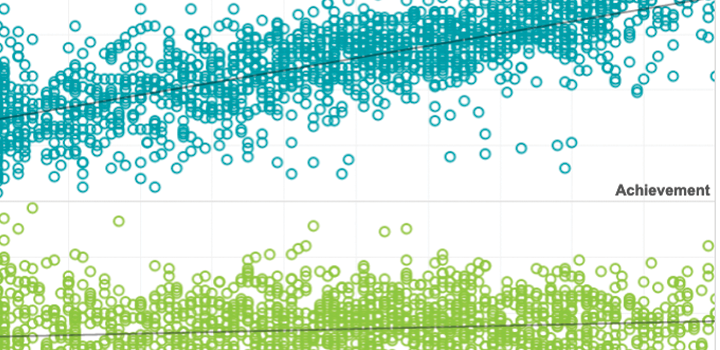

“No fun games”: Engagement effects of two gameful assessment prototypes
This study examines the impact of two “gameful assessment” prototypes on student engagement and teacher perceptions among 391 Grades 3–7 students and 14 teachers in one Midwestern and one Northwestern school.
By: Meg Guerreiro, Chase Nordengren
Topics: School & test engagement, Innovations in reporting & assessment


Learning styles: Considerations for technology enhanced item design: Learning styles
Learning styles (LS) have been used for classifying students by their preferences relative to taking information in, processing it and demonstrating their ability in the context of education. This paper investigates the role of LS in K-12 education by considering the manner in which student LS are assessed and the extent to which they have informed K-12 instruction.
By: Deborah Adkins, Meg Guerreiro
Topics: Innovations in reporting & assessment, Empowering educators


Evaluating the relationships between poverty and school performance
This study examined the relationships between poverty and a school’s academic performance (both student achievement and growth). Educators, advocates, and policymakers can use these data to shape how people look at the performance of schools in their communities and to inform education policy (e.g., the effect of evaluating schools based on achievement vs. growth).
By: Andrew Hegedus
Topics: Equity, High-growth schools & practices


The development of racial/ethnic and socioeconomic achievement gaps during the school years
This study examined developmental trends in academic achievement gaps between poverty and race/ethnicity groups from school entry to middle school using two large longitudinal data sets. We used time-varying effect modeling (TVEM) to estimate how the associations among race/ethnicity, poverty status, and math and reading achievement vary across continuous age from age 5 to age 15.
By: Megan Kuhfeld, Elizabeth Gershoff, Katherine Paschall
Topics: Equity, Growth modeling


In this article, we examined the prevalence of rapid guessing to determine if this behavior varied by grade, subject, and teacher, and evaluated if rapid guessing influenced teacher value-added estimates. We observed differences in rapid guessing across grades, subjects, and teachers; however, this behavior did not appear to have a substantive effect on teacher value-added estimates.
By: Andrew Rice
Topics: School & test engagement, Student growth & accountability policies


This study examines whether test effort differs by student subgroup, including by race and gender. The sensitivity of achievement gap estimates to any differences in test effort is also considered.
By: James Soland
Topics: Equity, School & test engagement


Achievement gaps are a metric of fundamental importance to U.S. practice and policy. Gap estimates are often used to measure the effectiveness and fairness of the education system at a given point in time, over the course of decades, and as children progress through school.
By: James Soland
Topics: Equity, School & test engagement, Student growth & accountability policies


